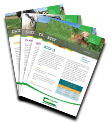
Tillage Newsletter – March 2022
Tillage Newsletter – March 2022 02 March 2022 Type Newsletter Download Publication (PDF) In this month’s edition: Winter cerealsFertiliser application will be the priority this month. The dramatic increase in fertiliser costs will result in an adjustment to application rates this season. Winter barleyApply the first split of N (50kg/ha) in early March and apply […]
02 March 2022
Type Newsletter
By

Tillage Newsletter – March 2022
02 March 2022
Type Newsletter
Type Newsletter
Download Publication (PDF)
In this month’s edition:
- Winter cereals
Fertiliser application will be the priority this month. The dramatic increase in fertiliser costs will result in an adjustment to application rates this season.- Winter barley
Apply the first split of N (50kg/ha) in early March and apply the main split by GS31. On thin or backward crops, the first N can be earlier (start of growth) but application rate should be low as crop demand is small. Sulphur (S) (15kg/ha) and deficient trace elements (based on soil analysis and field history) should be applied before GS31. - Winter wheat
Apply 40-50kg/ha of N as the first split in mid March or by GS30. Increase rates to 75kg/ha for thin crops, second wheat or where take-all is a risk. Generally, divide the N applications one-quarter:half:one-quarter over three splits. - Winter oats
The first application of approximately 50% of the total N requirement should be applied by GS30 (early to mid March). Where no autumn herbicide has been applied, treat with a sulfonylurea (Cameo Max/Ally Max) and a suitable partner to match weed spectrum.
- Winter barley
- Spring crops
- Spring beans
There is strong interest in spring beans again this year due to favourable contract prices (€265) and increased fertiliser costs. The protein payment is available again in 2022. - Spring barley
Consult the 2022 recommended list for variety characteristics. Seed rate should be calculated based on the TGW, which is normally printed on the bag. Sow 350 seeds/m² to establish 300 plants/m² in good conditions.
- Spring beans
- Sprayer testing
One of the key elements of the Sustainable Use Directive (SUD) is that sprayers must be tested and certified. A properly functioning sprayer is essential to get the best response from plant protection products (PPPs) and to protect the environment. - Health & Safety – Tractor/machine overturning dangers
With slurry and fertiliser spread in March, there is a lot of high-injury-risk movement. Farm deaths have occurred due to overturning of tractors, loaders and trailed equipment, including slurry tankers and cattle trailers/boxes.
